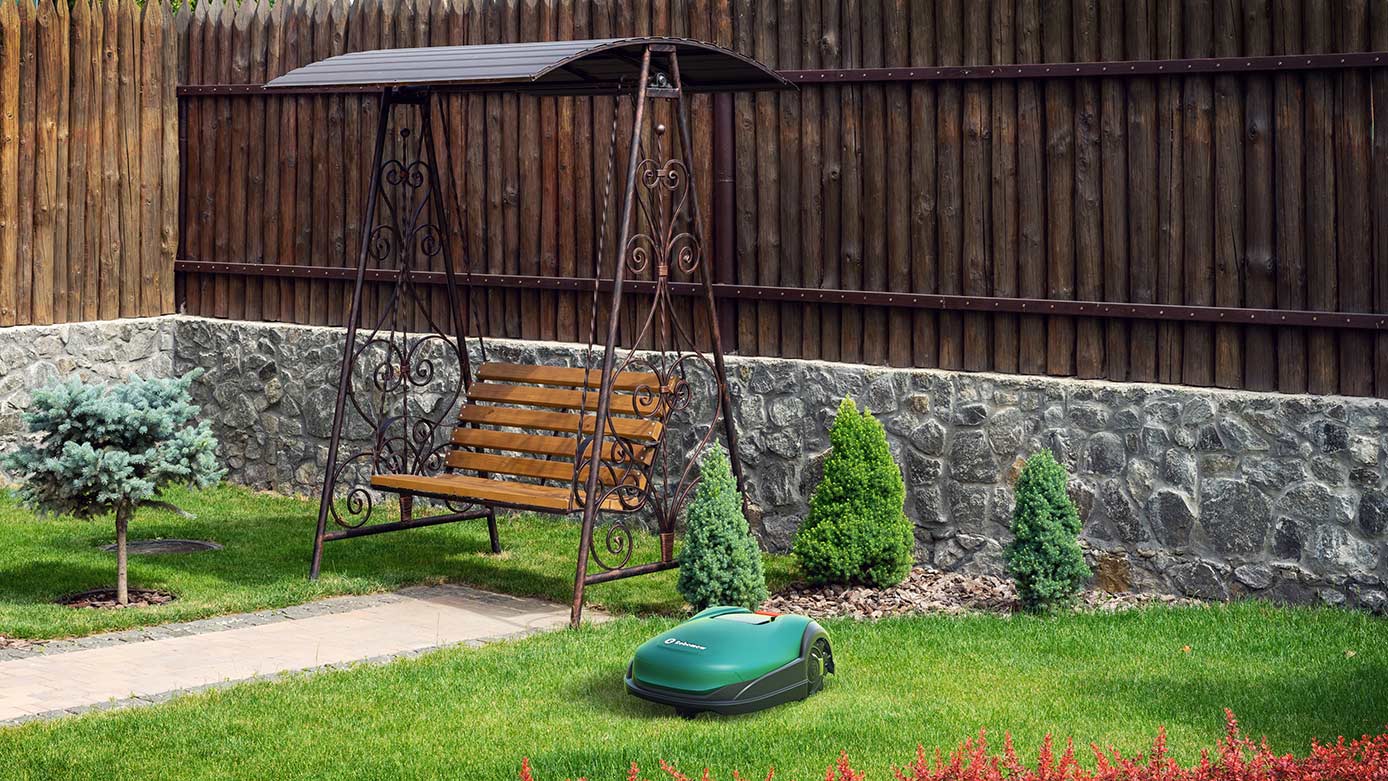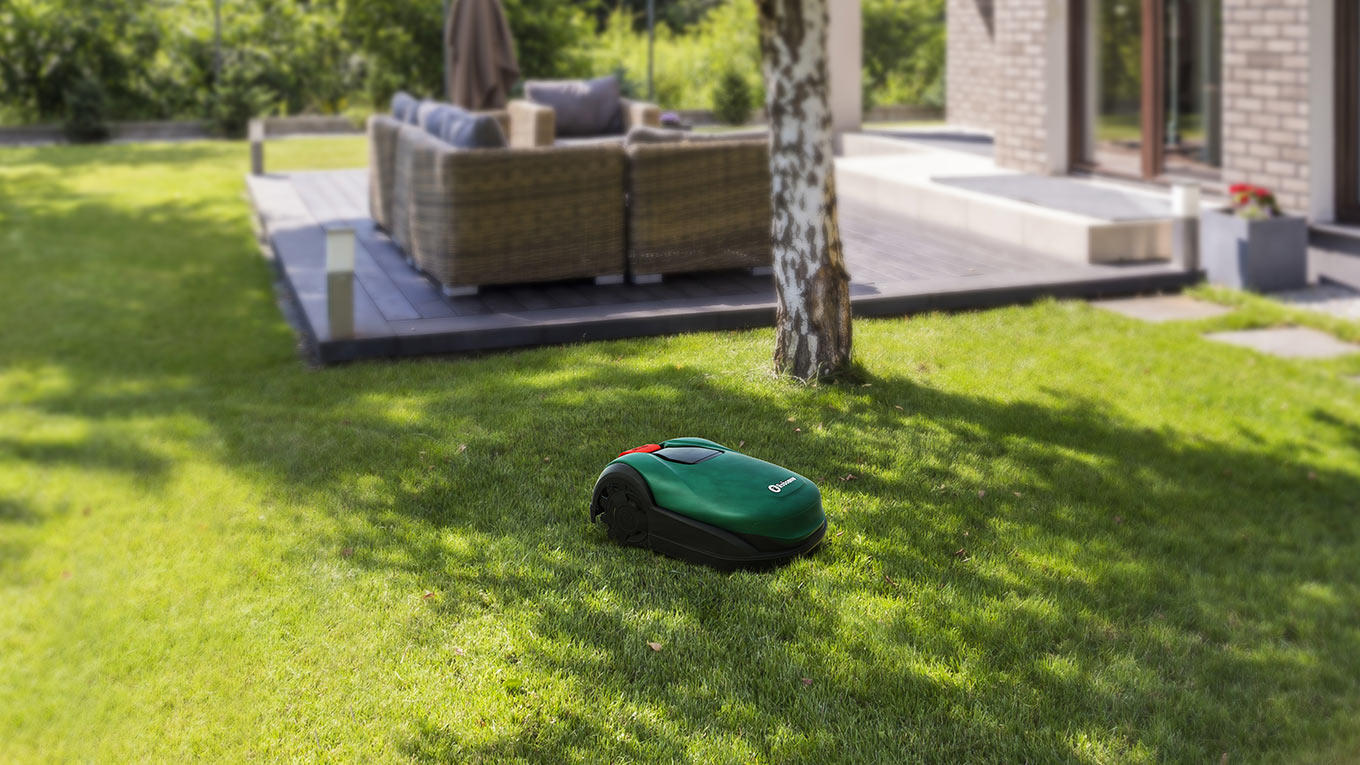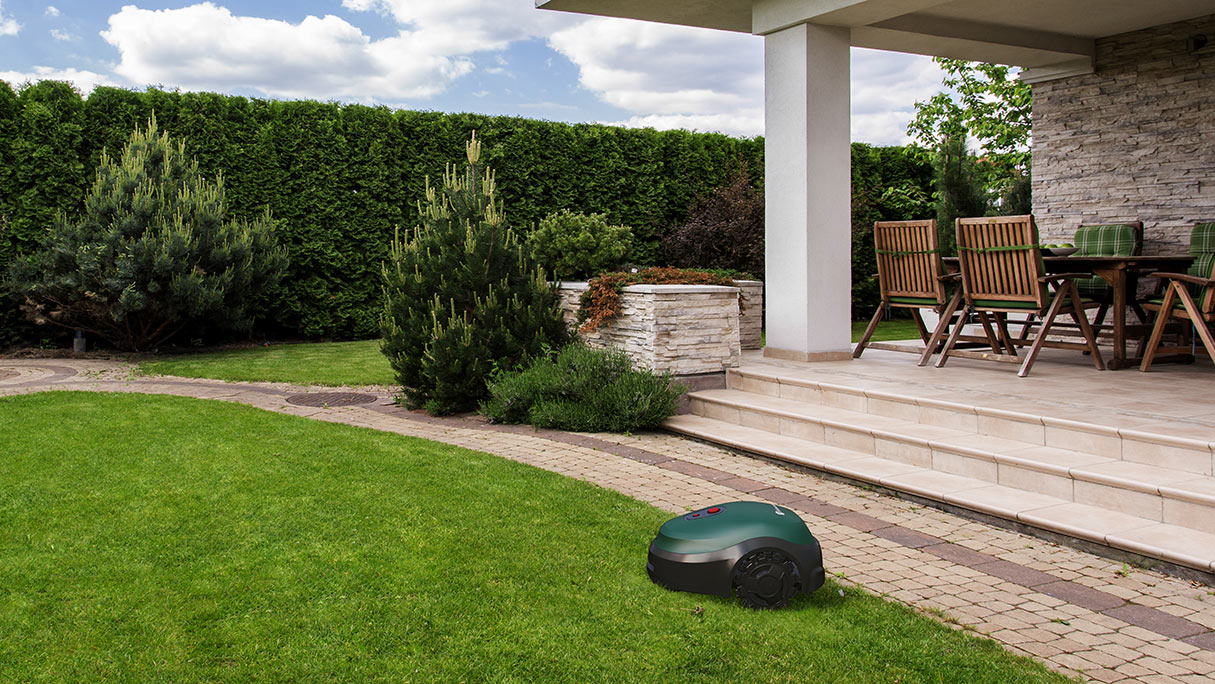Do robotic mowers improve the quality of the lawn?
26.05.2021
Supposedly, robotic mowers improve lawn quality compared to their classic lawn mower counterparts. Not only is time saved when a robotic mower takes care of the lawn (almost) all by itself, but there are also practical benefits. What does the robotic mower actually do differently that benefits the lawn and increases lawn quality?
The frequent mowing is beneficial for growth
A robotic lawnmower should mow a lawn in a rotation every one to three days (maximum), depending on personal preference. This causes the individual lawn blades to grow wider and form more shoots. The lawn becomes denser, thus blocking out pesky weeds.
Frequent mowing also stimulates root growth and improves the shear resistance of the plants. This is especially beneficial for lawns that take on a lot of wear and tear.
Reduced spread of weeds
In general, a robotic mower makes it more difficult for weeds to spread. They tend to grow better when a lawn is infrequently mowed. Moreover, frequent lawn mowing reduces the chances of weed seeds spreading in the first place. At the same time, weeds usually occupy niches created by a lack of nutrients, for example. Neither is the case with a robotic lawn, so the growth of weeds is significantly reduced.
Despite that, it is not always enough to reduce the spread of weeds just by using a robotic mower. On lawns where weeds have already spread extensively, other methods may be needed to eradicate them. There are also plants, such as couch grass, against which even a robotic mower is quite powerless. What does help in many cases, though, is to prevent or significantly reduce its reappearance through robotic use.
Natural fertilization through mulching
Due to frequent operation, a robotic mower only cuts off a very small portion of the stalk tips each time. These simply remain directly on the surface and decompose here. This permanently adds natural fertilizer to the soil. In turn, it improves the growth of the lawn plants and strengthens them, reducing the spread of weeds.
For this process to work, lawn clippings must be very short. Otherwise, the decomposition process would take too long and the mulch layer would reduce the aeration of the lawn. For example, weekly mowing with a hand mower is not enough because the tips of the grass blades have already grown too long.
Clean cut with the robotic mower
Compared to many other lawn mowers, a robotic mower produces an absolutely even and clean cut. This is mainly due to the razor-sharp blades of a robotic mower, which cut rather than knock off stalks, as is the case with the blades of most common lawn mowers. This prevents the tips from fraying and forming brown spots. The cut looks particularly lush, green and healthy.
The chaos principle, according to which robots crisscross the lawn, also ensures that the lawn is repeatedly mowed from different angles and thus does not lean in one direction. For garden owners who always mow the lawn according to the same principle, this can result in stripes and thus an unclean cut. This risk does not exist with a robotic mower.
A robot with a pendulum-suspended mowing deck also has a positive effect on the cutting pattern. Especially on uneven surfaces, this type of mowing deck guarantees that the lawn is cut uniformely everywhere, even in depressions or on uneven ground.
Further tips for lawn care with the robotic mower
In principle, a robotic mower offers the optimal conditions for improving the quality of a lawn. Nevertheless, this only succeeds when other aspects are taken into account. For example, if you send your robot out in the blazing midday sun or damage the lawn when tire tracks form during continuous rain, you will certainly not achieve perfect results. Therefore, here are some more tips for the ideal use of your robotic mower:
- The frequency of mowing should be chosen so that each spot is passed over by your robotic mower. We suggest no less than every two days. For this to succeed, the area output and mowing times must be matched to the size of the lawn.
- A low cutting height of 2-4 cm tends to help reduce the growth of weeds. However, the cutting height should always be adjusted to the grass mixture.
- Only by regularly replacing the blades, will they remain sharp enough to really cut off the stalks cleanly.
- The robotic lawnmower should parked during heavy rain. Even comparatively light models can leave ruts in the lawn in the worst case. In addition, wheels lose grip and the cutting pattern also suffers when the lawn is wet.
- Despite the use of a robotic lawnmower, it makes sense to thatch the lawn in spring and to supply important nutrients with a nitrogenous fertilizer.
- Since grass blades tend to dry out quickly after a fresh cut, it is advisable not to let the robot run during the midday heat. The plants lose too much liquid and brown stalk tips might form.
- There are special lawn mixtures for robotic mowers that are particularly well adapted to frequent mowing intervals and can also absorb the nutrients from the mulch particularly well.
A robotic mower can significantly increase the quality of the lawn. However, this is not a foregone conclusion, but only works if you take a few important points into account when using the device.
Products
Buy a Robomow
Robomow owner
About us
Sales & Support


